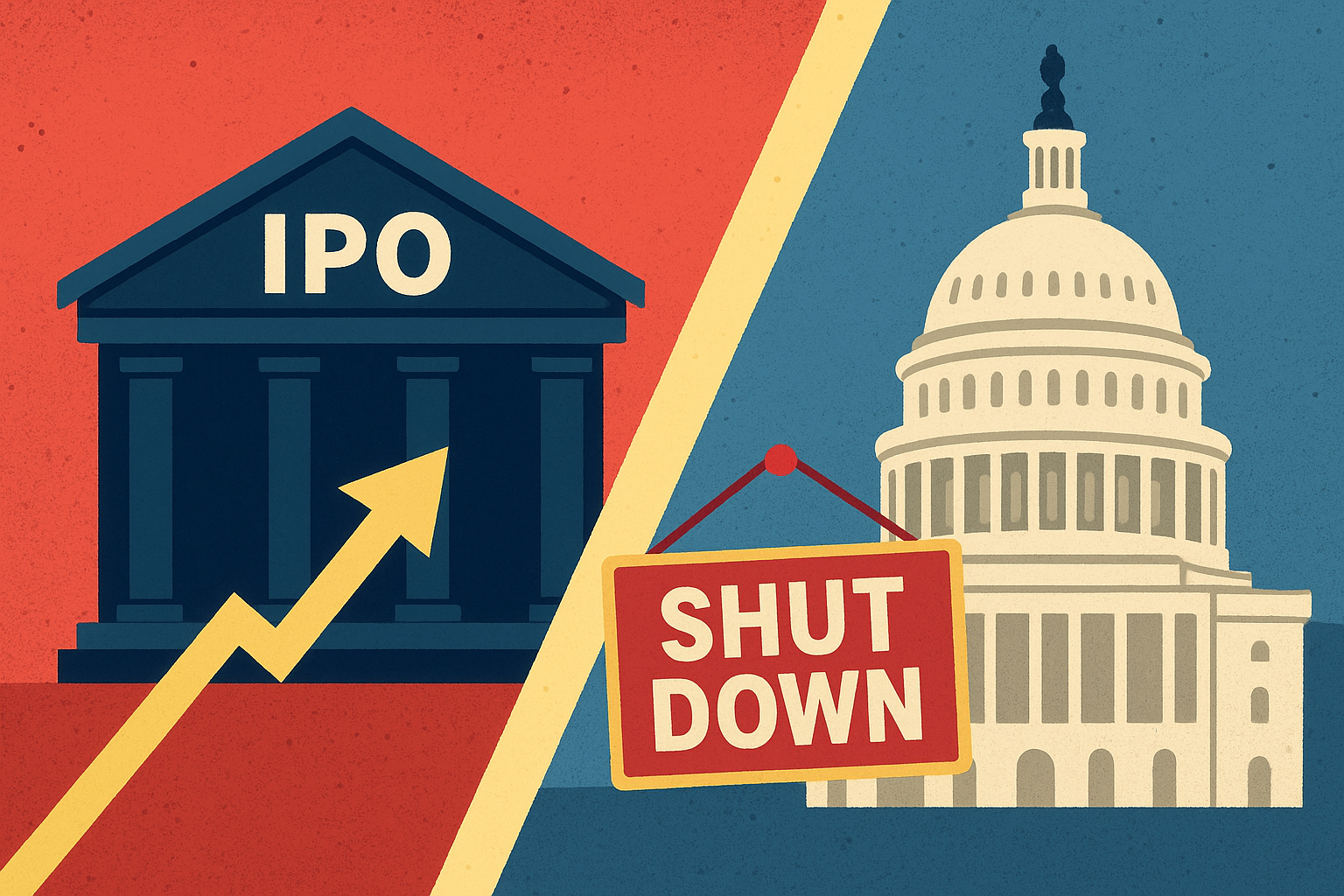The U.S. government may be partially shut down, but Wall Street isn’t waiting for Washington to reopen. In a rare move amid political gridlock, the Securities and Exchange Commission (SEC) announced a temporary relaxation of IPO rules, allowing registration statements to become effective automatically without the usual final review by SEC staff.
The change, first reported by Reuters, aims to keep capital markets functioning even as large parts of the federal government remain shuttered. But while this provides breathing room for companies eager to go public, it raises fresh questions about investor protection, disclosure rigor, and the quality of new listings during a period of regulatory disruption.
A Window Opens Amid Political Stalemate
The ongoing U.S. government shutdown — now stretching into its third week — has paralyzed a range of public services, including federal regulatory oversight. The SEC, operating with a skeleton crew, announced it would allow IPO filings to proceed under a mechanism known as “automatic effectiveness.”
Typically, the SEC reviews a company’s registration statement before an IPO to ensure compliance with disclosure rules, financial accuracy, and investor transparency. Under the temporary measure, companies can bypass this step if no SEC action is taken by the expected effective date — a process that is usually blocked by staff furloughs during shutdowns.
According to Reuters, this decision follows intense lobbying from investment banks and law firms concerned that a prolonged halt in IPO activity could bottleneck the market for weeks and undermine 2025’s strong equity issuance momentum.
Why This Matters for Investors
This regulatory workaround comes at a critical juncture for U.S. capital markets. Following a record-setting first half of 2025, IPO volumes have already cooled due to valuation pressures and investor caution toward unprofitable growth firms. The SEC’s temporary rule relaxation could reopen the window for companies waiting in the pipeline — particularly in AI infrastructure, clean tech, and biotech, sectors that have drawn strong institutional demand.
However, the lack of traditional oversight introduces a new risk layer. “Automatic effectiveness could speed up access to capital, but it also shifts more responsibility to underwriters and investors to ensure due diligence,” said one senior capital markets lawyer quoted by Reuters.
That sentiment echoes broader investor unease. During the last prolonged shutdown in 2019, the IPO market ground to a halt for nearly a month — but no comparable rule waiver was introduced. The SEC’s current approach represents a new precedent, balancing liquidity needs with investor safeguards.
The Broader Market Context
The timing couldn’t be more delicate. Equity markets have been on edge amid concerns over stretched valuations, a looming slowdown in corporate earnings, and ongoing rate uncertainty. The S&P 500 recently pulled back from record highs, and investors are recalibrating risk exposure amid a mix of macro headwinds and political dysfunction in Washington.
By enabling IPOs to continue, the SEC hopes to avoid another bottleneck similar to the post-COVID period, when delayed filings flooded the market all at once, creating valuation dislocations. Yet the tradeoff is clear: less scrutiny could mean greater volatility, especially in early-stage or speculative listings.
“Regulatory oversight is not a formality; it’s a safeguard,” noted a former SEC commissioner in Bloomberg. “While capital formation is critical, shortcuts in disclosure can backfire if even a single high-profile offering misleads investors.”
Future Trends to Watch
If the shutdown persists, this temporary rule may remain in place for weeks — potentially leading to a surge of IPOs racing to market before normal review procedures resume. Analysts at Morgan Stanley suggest that tech and biotech firms, which often rely on favorable market timing, will be the first to capitalize.
However, investors should remain selective. Offerings launched under these relaxed conditions might carry greater disclosure risk, especially for companies without a long operating history or with complex valuation models.
Longer term, this episode could influence how regulators design contingency frameworks for capital markets during future shutdowns. Expect debates in Congress about the balance between capital formation and investor protection — a recurring theme in U.S. financial policy.
Key Investment Insight
For investors, the temporary rule change creates both opportunity and risk.
- Opportunities: Short-term activity in the IPO pipeline could benefit investment banks, underwriters, and exchanges like Nasdaq ($NDAQ) and NYSE parent ICE ($ICE). Investors focusing on liquidity events and near-term equity issuance could find tactical entry points.
- Risks: Reduced oversight may heighten the risk of underperforming or opaque listings. Due diligence becomes paramount — investors should dig into company filings, management track records, and auditor credibility before buying in.
In short, speed may come at the cost of scrutiny. Quality, transparency, and governance are more valuable than ever.
Stay Ahead with MoneyNews.Today
As Washington’s gridlock reshapes the IPO landscape, investors must stay alert to the regulatory shifts that influence capital markets and corporate financing. For daily insights on market-moving policy, financial trends, and actionable investment analysis, stay tuned to MoneyNews.Today — your shortcut to smarter investing.





